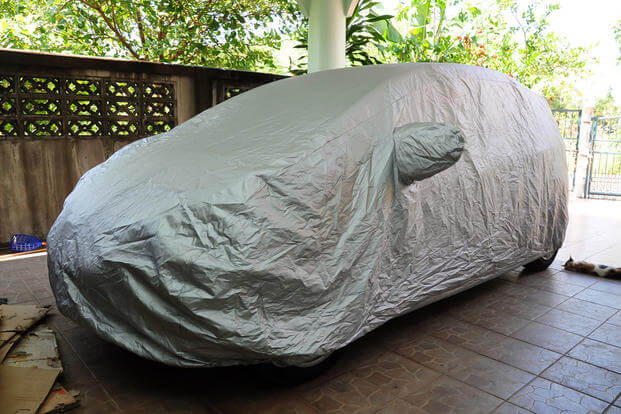One of the many challenges facing our active-duty military personnel is how to care for their rarely driven automobiles.
Men and women in uniform may be gone for months on end, while their cars sit idle. A car that goes long periods of time without being driven is at risk for corrosion, but there are steps you can take to combat those risks.
By taking some easy preventive measures, your car will be one less thing to worry about when you’re away from home.
Keeping it Covered
One of the most basic precautions you can take for your vehicle is to keep it securely stored. A vehicle left out in the elements is vulnerable to exterior damage. Not to mention, idle cars are a favorite hiding spot for little critters to build nests and wreak havoc. If possible, keep your vehicle stored safely in a garage, or at least under a car cover.
Maintaining Battery Life
A car battery can last up to five years in storage if a full level of charge is maintained. In the situation of a long-term deployment it's probably best to remove the fully charged battery and store it in a cool, dry place. Another option is to purchase a low voltage trickle charger that automatically maintains the battery in a constant state of readiness.
The alternative to both of those methods is to install a main power switch. These are often used in marine applications, but they also work well on automobiles. When leaving for deployment, turn off the battery. This isolates it from the parasitic drain of the various onboard systems. When you return, rotate the master switch to the on position, and the vehicle is once again ready for service.
Keeping the Engine Happy
In any type of storage situation, whether it's long-term or short-term, it's a good idea to have fresh oil installed. This new engine oil is rich in additives that help protect against corrosion and wear. To achieve the maximum benefit of these additives, see if you can arrange to have a family member or friend crank the motor up to circulate the lubricant once or twice a month. This will also help keep the internal seals and gaskets from dry rotting and deteriorating.
Storing Fuel Long-Term
Fuel degradation is another common problem facing rarely driven cars. All fuel will degrade over time. In fact, the latest wave of ethanol-blended fuels does not store well at all. This isn’t a problem for drivers who run through a tank of gas within a three-month period of time, but go longer than that, and you could run into problems. The last thing you want to do when you come home from deployment is to pull and flush the gas tank before you go for a ride. Thankfully, there are certain things we can do to extend the life of this petroleum product.
In a storage situation, moisture intrusion is an issue to contend with. As the tank goes through its normal temperature changes, moisture droplets form on the surfaces not submerged in gas. For this reason, it's recommended to fill the tank with an ethanol-free gasoline before you park the car for the last time. These ethanol-free fuels have a much longer storage life than their blended counterparts. Gas stations throughout the United States offer corn-free products for small engines and boat owners. You can go to pure-gas.org to find a station near you that offers pure gas.
Finally, if you’re not sure how long the car will sit, take an extra step by adding the recommended amount of a fuel stabilizer product to the tank. A tank full of ethanol-free gas with a fuel stabilizer additive can last up to five years without significant degradation.
Compare Auto Insurance Rates
Our auto insurance quote comparison tool can help you compare insurance companies. Get the most coverage for your hard-earned dollars by receiving competing quotes in minutes.
Mark Gittelman is a retired ASE certified master technician and writer for CARFAX. After 30 years of experience as a mechanic, he now shares his knowledge through tips on car buying and maintenance.










